I am working on image registration of OCT data. I would like to locate the regions/area in my targeted registered image, where image registration has actually occurred from the source images. I am working in Python. Can anyone please tell me what are the available techniques?
Any suggestions on how to proceed with the problem are also welcomed. I have done some trial image registration on two images initially. The goal is to do registration of a large dataset.
My code is given below:
#importing libraries
import cv2
import numpy as np
# from skimage.measure import structural_similarity as ssim
# from skimage.measure import compare_ssim
import skimage
from skimage import measure
import matplotlib.pyplot as plt
def imageRegistration():
# open the image files
path = 'D:/Fraunhofer Thesis/LatestPythonImplementations/Import_OCT_Vision/sliceImages(_x_)/'
image1 = cv2.imread(str(path) + '104.png')
image2 = cv2.imread(str(path) + '0.png')
# converting to greyscale
img1 = cv2.cvtColor(image1, cv2.COLOR_BGR2GRAY)
img2 = cv2.cvtColor(image2, cv2.COLOR_BGR2GRAY)
height, width = img2.shape
# Create ORB detector with 5000 features.
orb_detector = cv2.ORB_create(5000)
# Find keypoints and descriptors.
# The first arg is the image, second arg is the mask
# (which is not reqiured in this case).
kp1, d1 = orb_detector.detectAndCompute(img1, None)
kp2, d2 = orb_detector.detectAndCompute(img2, None)
# Match features between the two images.
# We create a Brute Force matcher with
# Hamming distance as measurement mode.
matcher = cv2.BFMatcher(cv2.NORM_HAMMING, crossCheck=True)
# Match the two sets of descriptors.
matches = matcher.match(d1, d2)
# Sort matches on the basis of their Hamming distance.
matches.sort(key=lambda x: x.distance)
# Take the top 90 % matches forward.
matches = matches[:int(len(matches) * 90)]
no_of_matches = len(matches)
# Define empty matrices of shape no_of_matches * 2.
p1 = np.zeros((no_of_matches, 2))
p2 = np.zeros((no_of_matches, 2))
for i in range(len(matches)):
p1[i, :] = kp1[matches[i].queryIdx].pt
p2[i, :] = kp2[matches[i].trainIdx].pt
# Find the homography matrix.
homography, mask = cv2.findHomography(p1, p2, cv2.RANSAC)
# Use this matrix to transform the
# colored image wrt the reference image.
transformed_img = cv2.warpPerspective(image1,
homography, (width, height))
# Save the output.
cv2.imwrite('output.jpg', transformed_img)
#following is the code figuring out difference in the source image, target image and the registered image
# 0 mse means perfect similarity , no difference
# mse >1 means there is difference and as the value increases , the difference increases
def findingDifferenceMSE():
path = 'D:/Fraunhofer Thesis/LatestPythonImplementations/Import_OCT_Vision/sliceImages(_x_)/'
image1 = cv2.imread(str(path) + '104.png')
image2 = cv2.imread(str(path) + '0.png')
image3 = cv2.imread('D:/Fraunhofer Thesis/LatestPythonImplementations/Import_OCT_Vision/output.jpg')
err = np.sum((image1.astype("float") - image3.astype("float")) ** 2)
err /= float(image1.shape[0] * image3.shape[1])
print("MSE:")
print('Image 104 and output image: ', + err)
err1 = np.sum((image2.astype("float") - image3.astype("float")) ** 2)
err1 /= float(image2.shape[0] * image3.shape[1])
print('Image 0 and output image: ', + err1)
def findingDifferenceSSIM():
path = 'D:/Fraunhofer Thesis/LatestPythonImplementations/Import_OCT_Vision/sliceImages(_x_)/'
image1 = cv2.imread(str(path) + '104.png')
image2 = cv2.imread(str(path) + '0.png')
image3 = cv2.imread('D:/Fraunhofer Thesis/LatestPythonImplementations/Import_OCT_Vision/output.jpg')
result1=measure.compare_ssim(image1,image3)
print(result1)
#calling the fucntion
imageRegistration()
findingDifferenceMSE()
#findingDifferenceSSIM()
This is the registered image:

This image is the first reference image:

This is the second reference image:
